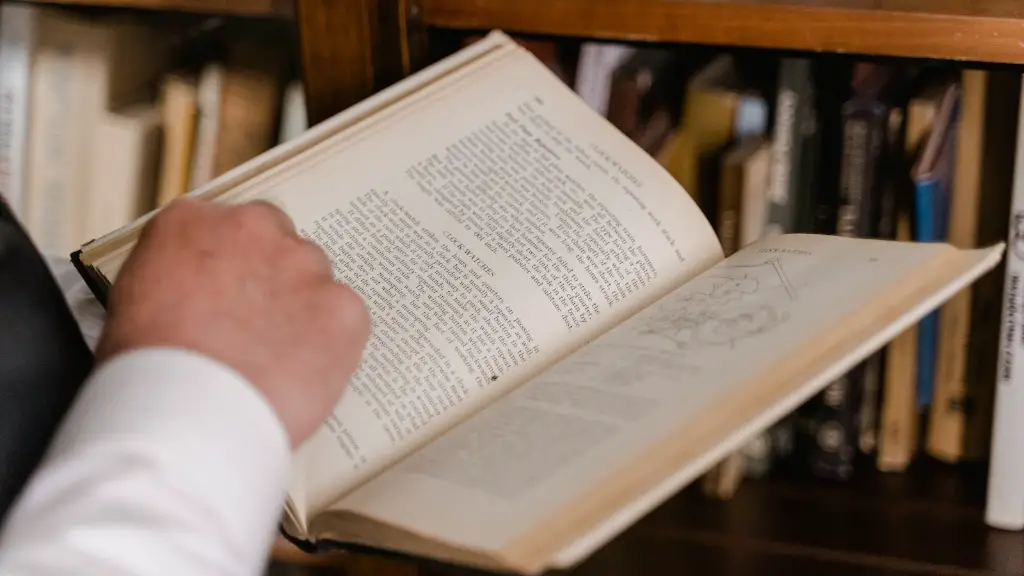At first thought, poetry and its lexicon may seem like an alien language. But most of us have at least heard of one particular poetic device—metonymy. In this article, we will explore this type of figurative language, explain how it works and how it is used in poetry.
What Is Metonymy?
Put simply, metonymy is a figure of speech in which a thing or concept is substituted with a word or phrase that is closely associated with it. For example, using “the Crown” to refer to the monarchy or saying “the Oval Office” to mean the President of the United States. When used poetically, metonymy is often used to bridge an idea with its emotional or physical understanding—such as when Shakespeare referred to morning as “the east” in his sonnets.
How Does Metonymy Work?
Metonymy works by replacing the literal word with a related one, often a physical object connected to a concept. This allows the reader to draw a relationship between the two words and understand them simultaneously. This type of figurative language is especially useful in poetry, where word choice can often carry more significance than the literal meaning of words.
Examples of Metonymy in Poetry
Metonymy has been used in poetry since ancient times, and is still used in modern works. Here are some examples from famous poems:
In William Wordsworth’s poem “I Wandered Lonely as a Cloud,” he uses the phrase “tossing their heads in sprightly dance” to refer to a field of daffodils, replacing the literal “daffodils” with “heads” to personify the flowers and describe their movement.
In his epic poem “The Waste Land,” T.S. Eliot wrote the famous line “April is the cruellest month” to describe the beginning of a new season, using the word “month” to refer to a period of time rather than an actual month.
Uses of Metonymy in Poetry
Metonymy is an effective way to add variety and depth to poetic writing. It can help to convey complex ideas in a more vivid and expressive way—allowing the audience to glean more meaning out of the poem. Metonymy can also be used to create a sense of atmosphere or tone—conjuring up an image in the reader’s mind with just a few words.
The Benefits of Using Metonymy
Metonymy can help poets express their feelings and ideas in a concise manner. By replacing words and concepts with related words and images, poets can effectively convey their message without using a lengthy description. Metonymy is also often used to create vivid images in the reader’s mind, allowing them to connect with the poem more deeply. Additionally, metonymy can add a layer of complexity to a poem—allowing poets to hint at more profound meanings without explicitly stating them.
How to Use Metonymy in Poetry
Using metonymy in poetry can be difficult, as it requires selecting related words that evoke certain feelings or images in the reader. It’s important to first understand the meaning of the words you are substituting and consider how they might be interpreted by the reader. Selecting words or phrases that are related to your intended idea can help to ensure that your idea is accurately conveyed. Additionally, it can be helpful to consider how the words can be interpreted in different ways—to allow the reader more freedom of interpretation and a chance to form their own connections.
Tweaking Metonymy To Express The Poet’s Intention
When using metonymy, it is important to be mindful of the words and phrases that are being used to substitute. It is easy to slip into clichés while using metonymy, which can drastically alter the meaning of the poem. If you’re using a phrase that has multiple meanings, it’s important to consider how your intended meaning may be interpreted. Additionally, it’s important to consider the context of the poem and ensure that the substituted words evoke the intended feeling or image.
Overcoming the Pitfalls of Metonymy
Using metonymy in poetry can be tricky, especially if the poem is long or complex. To ensure that your intended meaning is accurately conveyed, it’s important to be as specific as possible when selecting words to substitute. Additionally, it’s important to be mindful of the context of the poem—context can drastically alter the interpretation of certain words or phrases, and can make all the difference when it comes to conveying your message.
When to Use Metonymy
Metonymy can be an effective tool when used correctly. It can be used to create vivid images in the reader’s mind, evoke emotions and express complex ideas in a concise way. Additionally, metonymy can be used to add depth to a poem—allowing the reader to form their own interpretations of the poem. Metonymy can also be used to create a sense of atmosphere or tone—allowing the poet to convey their feelings without having to describe them in detail.
Areas of Improvement
When using metonymy, it’s important to be mindful of the words and phrases used to substitute. Clichés can drastically alter the meaning of a poem and can be a tricky area to navigate. Additionally, it’s important to consider the context of the poem and ensure that the substituted words evoke the intended feeling or image. It’s also important to be aware of the potential interpretations of a poem, and to select words and phrases that are related to your intended meaning.
When Not to Use Metonymy
Metonymy can be an effective tool in poetry, but it’s important to use it judiciously. Metonymy is best used when conveying complex feelings or ideas, as it allows the poet to express their thoughts in a succinct and poetic manner. If the poem does not require the use of figurative language, it’s best to steer clear of metonymy. Additionally, it’s important to consider the context of the poem and ensure that the substituted words are appropriate.
Conclusion
Metonymy is an effective poetic tool that, when used correctly, can help create vivid images and evoke emotions in the reader. It can also be used to express complex ideas in a more concise manner. When using metonymy, it’s important to be mindful of the words and phrases used, context and potential interpretations of a poem. Additionally, it’s important to consider the appropriateness and accuracy of the words used when expressing ideas or feelings.



